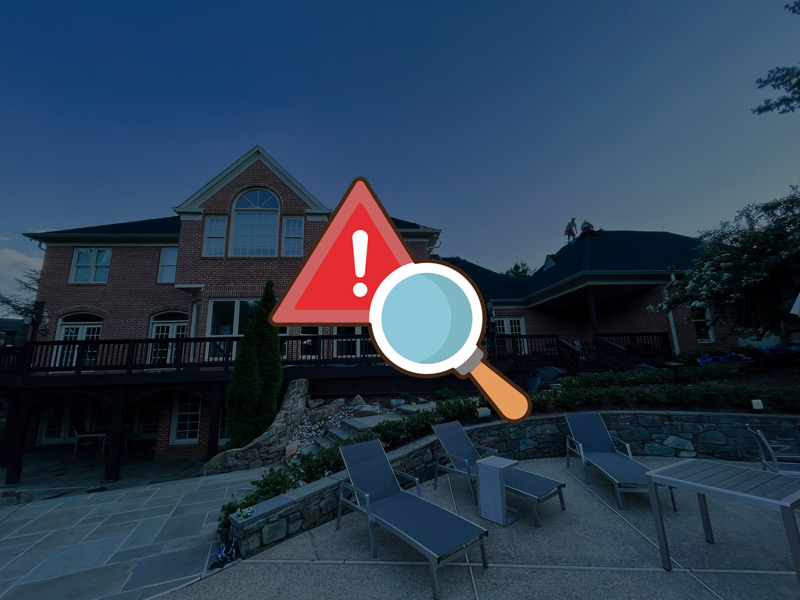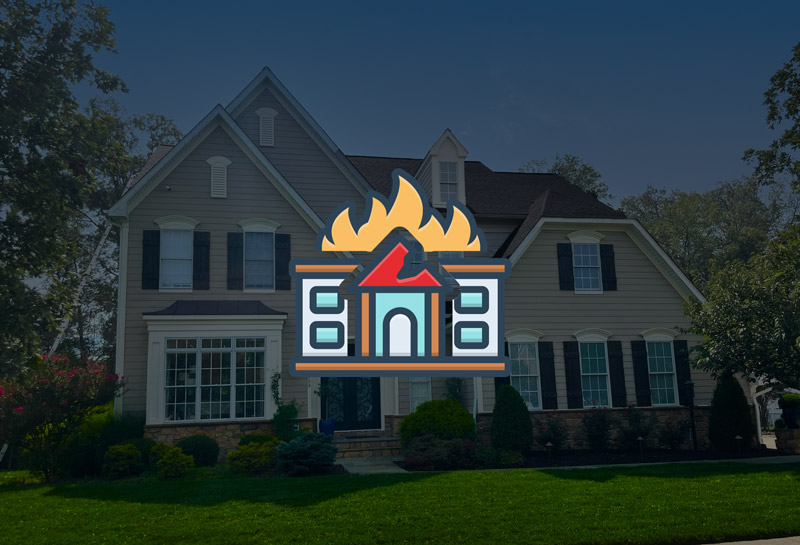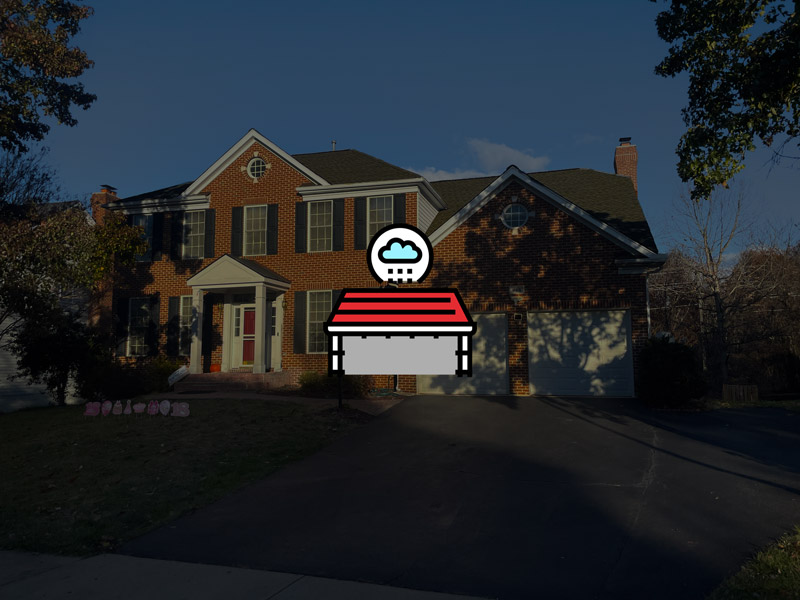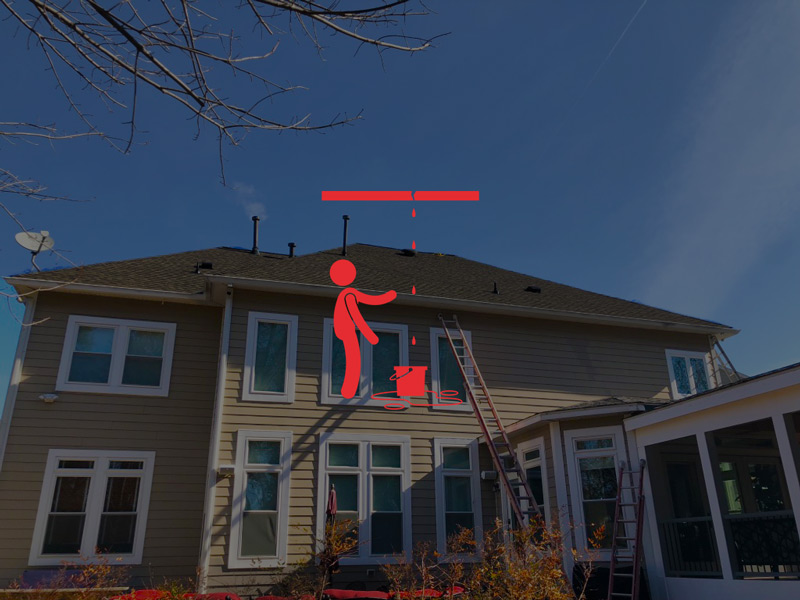Hidden Signs of a Roof Leak: Unveiling the Telltale Indicators
As a responsible homeowner, being aware of the hidden signs of a roof leak is crucial in maintaining the integrity of your home and preventing potential damages. By recognizing these signs early on, you can take prompt action to address the issue and avoid more extensive repairs down the line.

Assessing Interior Clues
Stains and Discoloration on Ceilings and Walls
One of the most common signs of a roof leak is the presence of stains or discoloration on your ceilings or walls. These stains may appear as dark patches, yellowing, or watermarks. They often indicate that water has penetrated through the roof and seeped into your home’s interior. Keep an eye out for these stains, especially in areas directly below the roof or near chimneys and skylights.
Peeling Paint and Wallpaper
If you notice peeling paint or wallpaper in certain areas of your home, it could be a result of water damage caused by a hidden roof leak. The moisture from the leak can cause the paint to bubble or peel off, and wallpaper may begin to loosen or show signs of deterioration. Pay attention to any unusual changes in your walls’ appearance, as they could be linked to a roof leak.
Musty Odors and Mold Growth
Hidden roof leaks can create a damp environment that fosters the growth of mold and mildew. If you detect a musty odor in your home, particularly in areas close to the roof, it may indicate the presence of mold caused by a leak. Additionally, keep an eye out for visible mold growth on walls, ceilings, or in the corners of rooms. Mold can not only damage your home’s structure but also pose health risks to you and your family.

Examining Exterior Indicators
Damaged or Missing Shingles
One of the prominent signs of a roof leak is the presence of damaged or missing shingles. Inspect your roof regularly for any shingles that are cracked, broken, or completely absent. These damaged areas create vulnerable spots where water can penetrate the roof structure, leading to leaks. Keep an eye out for any shingles that appear dislodged, torn, or deteriorated, as they may indicate potential areas of concern.
Curling, Buckling, or Warping Shingles
Another exterior clue pointing to a hidden roof leak is the curling, buckling, or warping of shingles. Exposure to extreme weather conditions, age, and inadequate installation can cause shingles to lose their shape and integrity. These deformities compromise the effectiveness of your roof’s waterproofing capabilities, allowing water to seep through and infiltrate your home. Look for any noticeable curling or bulging of shingles, as well as sections that appear uneven or distorted.
Accumulation of Granules in Gutters
Inspecting your gutters can provide valuable insights into the condition of your roof. If you notice a significant accumulation of granules in the gutters, it may indicate deteriorating shingles. As shingles age, they tend to shed granules, which often end up in the gutter system. Excessive granule loss can weaken the shingles and compromise their ability to protect against water infiltration. Therefore, the presence of granules in the gutters can be an indication of potential roof leaks.

Inspecting Attic Leaks
Water Stains or Dampness on Attic Rafters or Insulation
Inspect the attic for any water stains or signs of dampness on the rafters or insulation. These stains can indicate a roof leak that has allowed water to seep through the roof structure. Look for discolored areas, dark patches, or areas that appear wet or damp to the touch. These signs suggest an ongoing or previous leak that may require immediate attention.
Mold or Mildew Growth in the Attic
The presence of mold or mildew in the attic is a strong indication of a hidden roof leak. Roof leaks create a moist environment, providing an ideal breeding ground for mold and mildew. Check for any visible signs of mold growth on the attic walls, ceilings, or in corners. If you detect a musty odor or see fuzzy patches of mold, it’s important to address the roof leak promptly to prevent further mold proliferation.
Sunlight Penetration or Visible Holes
During a daytime inspection, check for any signs of sunlight penetrating through the attic. Sunlight beams or visible holes in the roof indicate compromised areas where water can enter. Look for any gaps, cracks, or openings that allow light to pass through. Such openings should be repaired to prevent water infiltration and subsequent roof leaks.

Detecting Water In Other Areas
Wet or Discolored Roof Decking
Inspect the roof decking for any signs of wetness or discoloration. If you have access to your roof, carefully examine the surface. Wet spots or areas that appear darker than the surrounding decking can suggest the presence of a roof leak. By identifying these indications, you can narrow down the location of the leak and take appropriate action.
Damaged Flashing around Chimneys, Skylights, or Vents
Flashing plays a crucial role in preventing water penetration around chimneys, skylights, vents, and other roof penetrations. Check the condition of the flashing in these areas for any signs of damage, such as cracks, gaps, or missing sections. Faulty or deteriorated flashing can allow water to seep into your home, resulting in hidden roof leaks. Ensure the flashing is intact and properly sealed to maintain a watertight roof.
Overflowing or Clogged Gutters
While not directly related to the roof itself, overflowing or clogged gutters can contribute to roof leaks. When gutters are obstructed or unable to drain water effectively, it can lead to water backing up and seeping under the roof’s edge. Regularly inspect and clean your gutters to prevent water overflow, ensuring that they are functioning properly.

Steps to Address Roof Leaks
Hiring a Professional Roofing Contractor
Engaging the expertise of a professional roofing contractor is vital when dealing with roof leaks. A qualified contractor will have the knowledge and experience to identify the root cause of the leak and recommend appropriate solutions. They can conduct a thorough inspection of your roof, assess the extent of the damage, and provide expert advice on the necessary repairs. Hiring a professional ensures that the issue is addressed effectively and reduces the risk of recurring leaks.
Conducting Regular Roof Inspections
Regular roof inspections are essential to catch hidden signs of a roof leak before they escalate. Schedule professional roof inspections at least once a year, or after severe weather events, to detect any potential issues early on. During these inspections, the contractor can assess the condition of your roof, identify any signs of damage or leaks, and recommend preventive measures. Being proactive with regular inspections helps maintain the longevity and integrity of your roof.
Importance of Timely Repairs to Prevent Further Damage
Prompt repairs are crucial to prevent further damage caused by roof leaks. Ignoring or delaying repairs can result in more extensive and costly issues, such as structural damage, mold growth, and compromised insulation. As soon as signs of a roof leak are identified, take immediate action to address the problem. This may involve patching damaged areas, replacing broken shingles, or sealing gaps and cracks. Timely repairs help maintain the structural integrity of your roof and protect your home from potential water damage.
View More Articles
Please Share!










